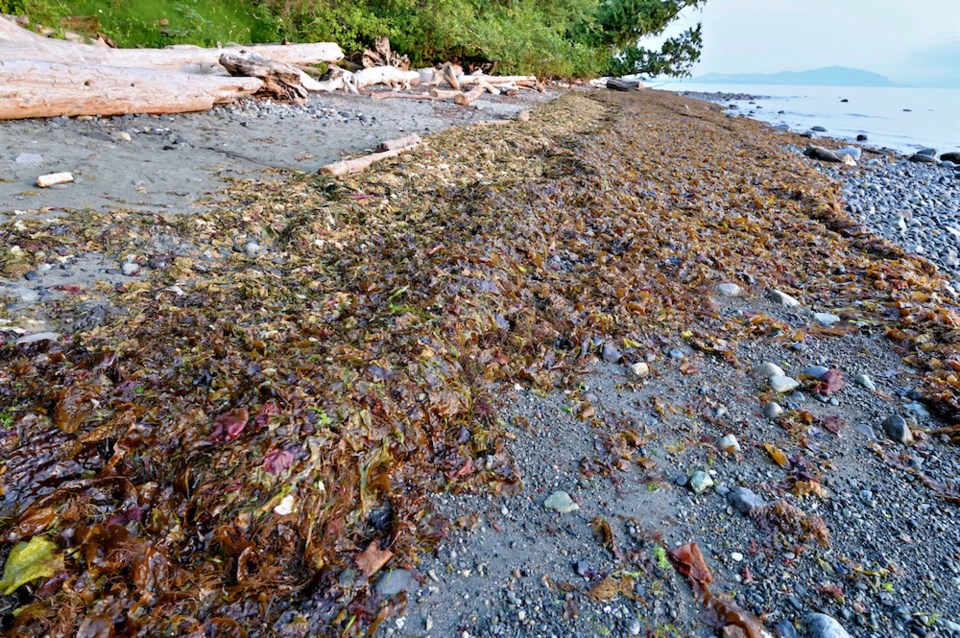Vancouver is sitting on a goldmine of gas. Well, next to one. And it isn’t gold per se, but blue.
Let me start all over here. The rich marine ecosystem that defines life along the west coast of British Columbia is enriched with what is called “blue carbon.” That is, carbon dioxide caught and held by the seagrasses and salt marshes in our estuaries. The catching and holding on of that carbon is a good thing; less carbon in the atmosphere means fewer greenhouse gasses (GHG), and fewer GHGs lessens the effects of climate change.
But when these marine areas are damaged by storms, pollution, or development, all of that carbon is released. The carbon released into the water and atmosphere can fuel further climate change chaos. (Rising sea levels, soil erosion, fiercer storms, and floods etc. All of which, coincidentally, can be mitigated by ... blue carbon.)
Carbon dioxide held under pristine marine conditions can stay there, stable and secure, for thousands of years. By one account, 93 per cent of the earth’s carbon dioxide is sequestered by our oceans.
Sequestration simply means to capture and store carbon dioxide from the atmosphere. Carbon dioxide is a naturally occurring gas that feeds on infrared radiation creating GHG. Carbon acts as a lid on radiation, keeping it at ground level. It does bad things to the air, the earth, and to us. That is why we need “carbon sinks.” Oceans are a perfect example of a natural carbon sink, a reservoir that gathers and absorbs carbon in mass quantities.
Offshore mining, dredging, and pollution damage marine ecosystems
The marine vegetation at the core of blue carbon is tidal and salt marsh, seagrass, and mangrove. Salt marsh and eelgrass, a common seagrass, dot our coastline. (You’ll find mangroves in tropical and sub-tropical waters.)
Fifty-five per cent of the global carbon captured is done via blue carbon. And while green carbon, or the sequestration of carbon by forests, has a long history, blue carbon’s potential has been underused to date. According to a report by Sierra Club, “roughly 400 km2 of salt marsh and seagrass meadows stash away as much carbon as B.C.’s portion of the boreal forest, and the equivalent of the emissions of some 200,000 passenger cars.”
Marine ecosystems are in peril. And so too is our greatest natural ally against carbon dioxide. According to a UNESCO report, “Nearly 50 per cent of the pre-industrial, natural extent of global coastal wetlands have been lost since the 19th century.” The biggest cause of destruction to these ecosystems is, unsurprisingly, humankind. Offshore mining, dredging, and pollution all play a hand in decimating these areas.
Another UNESCO estimate says that in conserving, protecting, and maintaining these precious ecosystems “and catalyzing their recovery,” a full three to seven per cent of current fossil fuel emissions (“black carbon” if you will) could be offset within two decades.
What can we do to protect our "blue carbon" resources in Vancouver?
So how do we ensure blue carbon remains a vital, natural ally against climate change? Through the protection of our estuaries, for starters. Stronger habitat conservation efforts and limited marine development are critical steps, also. And a great rethinking of our dependence on fossil fuels so damaging to our marine life is also warranted.
According to the City of Vancouver’s Climate Emergency Action Plan, blue carbon plans are in the works: “Ocean/aquatic carbon capture projects in Vancouver and the region could include coastal and freshwater wetland restoration, management or protection, among others.” But will those projects be enough? Or even timely? In the bigger picture, protecting our waters is about more than improving fish stocks or cleaning the water; it’s about utilizing the natural carbon-securing source to its greatest potential.




